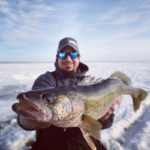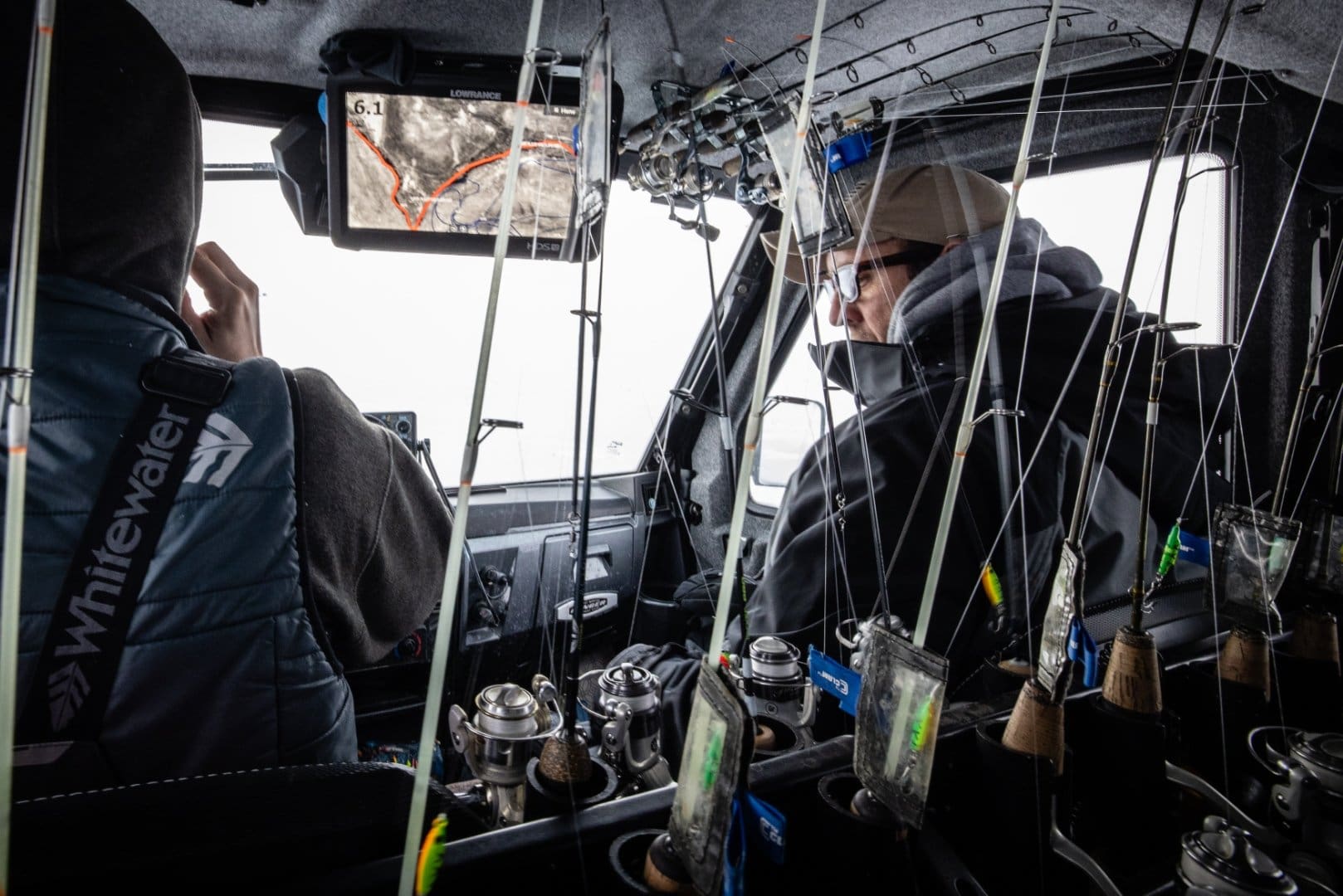If you want to stay safe on big-water ice, best to check with an experienced, local ice fishing guide like Perch Patrol’s Korey Sprengel, who’s checking accesses, travel routes, and other areas for safety every single day.
Given intermittent warming trends, we talked with Korey to get the scoop on best practices for staying safe on big water ice like North Dakota’s massive 200,000-acre-plus Devils Lake as we head from an unusually mild midwinter period into late-season ice.
First, Sprengel was quick to offer up a few tips for any anglers fishing big-waters anywhere throughout the Ice Belt, from both a fish-catching and safety perspective.
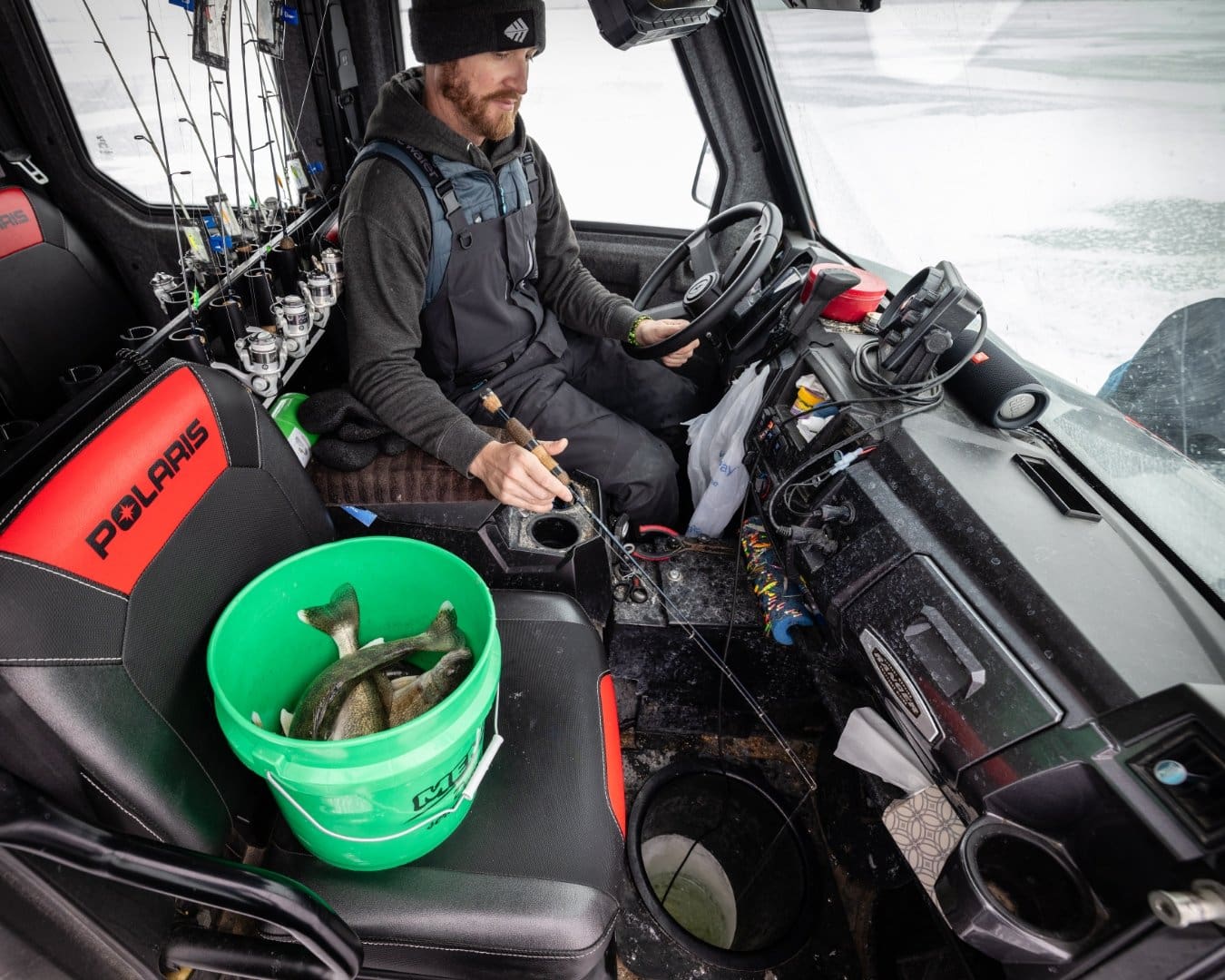
1) Stay Away From The Crowd: “By midwinter, ice fishing pressure will push fish out of community spots. They start moving toward more isolated structures that doesn’t get fished as much. So, finding those little spots versus picking the biggest piece of structure in an area that’s already been hit hard since early season is a good idea,” offers Sprengel.
2) Choose the Best Access: “Your southern accesses will generally be better than northern accesses due to sunlight exposure. But it also depends on the body of water you’re on. Here on Devils, a lot of access points require you to travel over a lot of shallow water before you get to the deeper water. On the newly flooded lakes out here, those accesses can become very iffy, very fast, where you need to drive your machine through a lot of water before you hit solid ice. So, you have to be very cautious. You can’t really trust any of it.”
Sprengel continues: “The biggest thing is staying away from shallow water. That could be at the access at the boat ramp; be a shallow rock pile that comes up to three feet or less; or, where vegetation reaches up to the ice surface. Especially with sunlight penetration, shallow water heats up a lot quicker, melting ice from the bottom and the top. On Devils, we deal with a lot of shallow roads that can warm up and melt fast. Obviously, crossing those areas can be risky. For me, I avoid any areas that are shallower than three or four feet when it comes to ice travel.”
3) Hire a Guide: “If your goal is to catch fish and minimize hassle and safety concerns, then hiring a guide on any big lake makes sense,” says Sprengel. “We monitor the ice situation every day and know where not to go. That’s not as easy for anglers just visiting to determine on their own.”
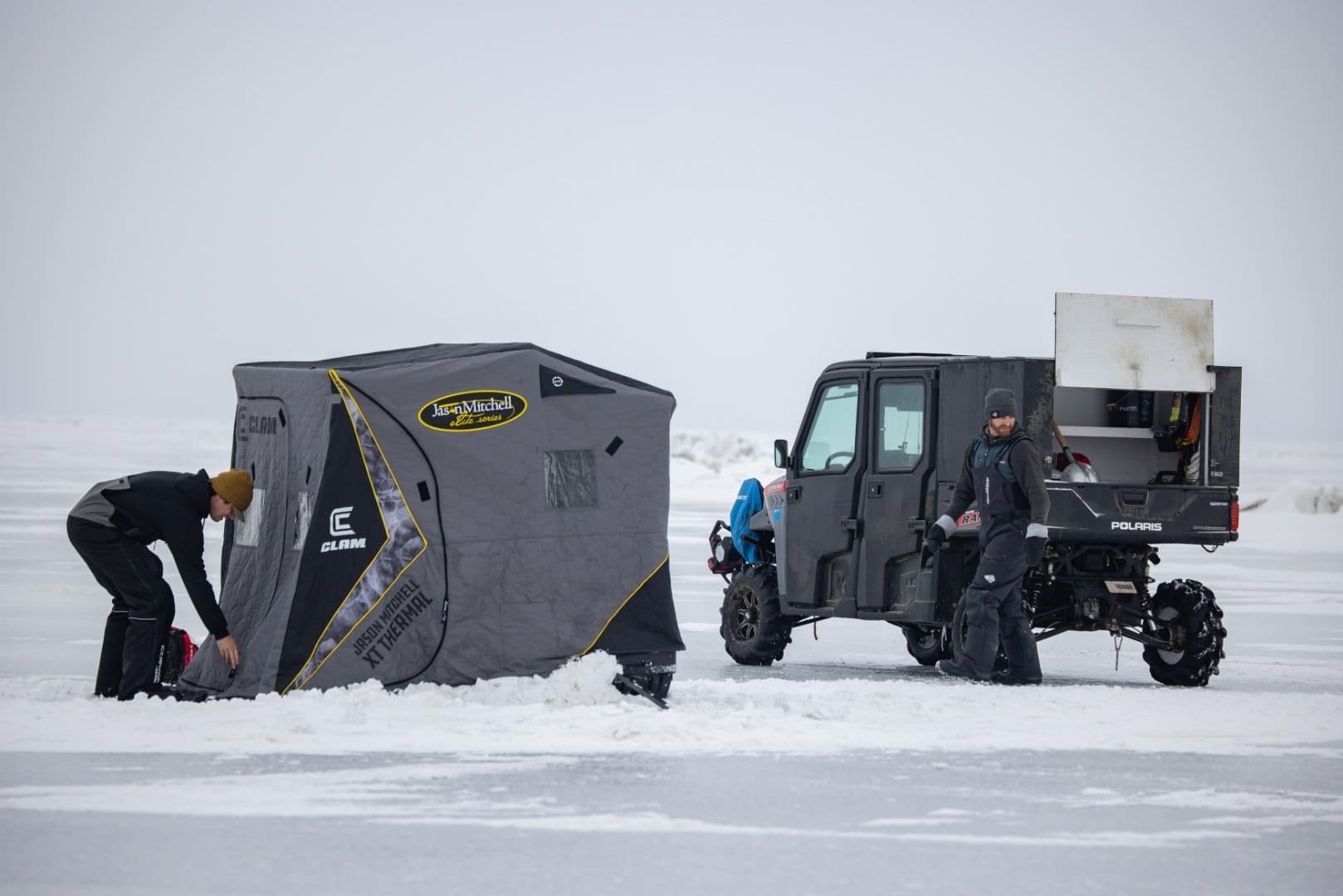
Devils Lake Conditions: Early February
“We just came off probably four or five days of sunny weather in the 40s. But surprisingly, the ice conditions are dealing fairly well,” says Sprengel.
“We basically lost all our snow, which created some water on the ice in a few areas. And the landings have deteriorated in some areas. But, at the end of the day, we’re in pretty good shape compared to what we could be.”
Sprengel says while the past few days have been warmer, they’ve had foggy conditions without the sun, which has kept the ice firm despite losing snow. They’ve also had nighttime lows below freezing which has acted as a stabilizer.
“Surface ice doesn’t start to melt until about 1 pm in the afternoon, but the conditions are changing every day. Each morning out will be different than the day before—access points, areas with cracks, best places to cross, etc. Although we have 22- to 30-inches of ice throughout most of the lake—a solid base layer—things can change pretty fast, especially when you factor in moving water and ice melting from both the bottom and the top.”
Sprengel says unseasonably warm weather has kept Devils Lake ice fishing tourism down a bit, even though they have probably the best ice south of the Canadian border.
“Everyone is kind of cautious, which is good—and the decrease in angler numbers has taken a lot of pressure off the accesses. Those are the first areas to get really beat up,” says Sprengel.
Despite the lack of snow and thicknesses that imply bigger rigs, full-size truck traffic is not currently encouraged, although some anglers are doing so. For Sprengel, he operates a Polaris Ranger Side-by-Side Crew Cab (with studded tires) and pulls two Jason Mitchel Voyager two-man flip-overs behind for clients to fish out of while he continues scouting.
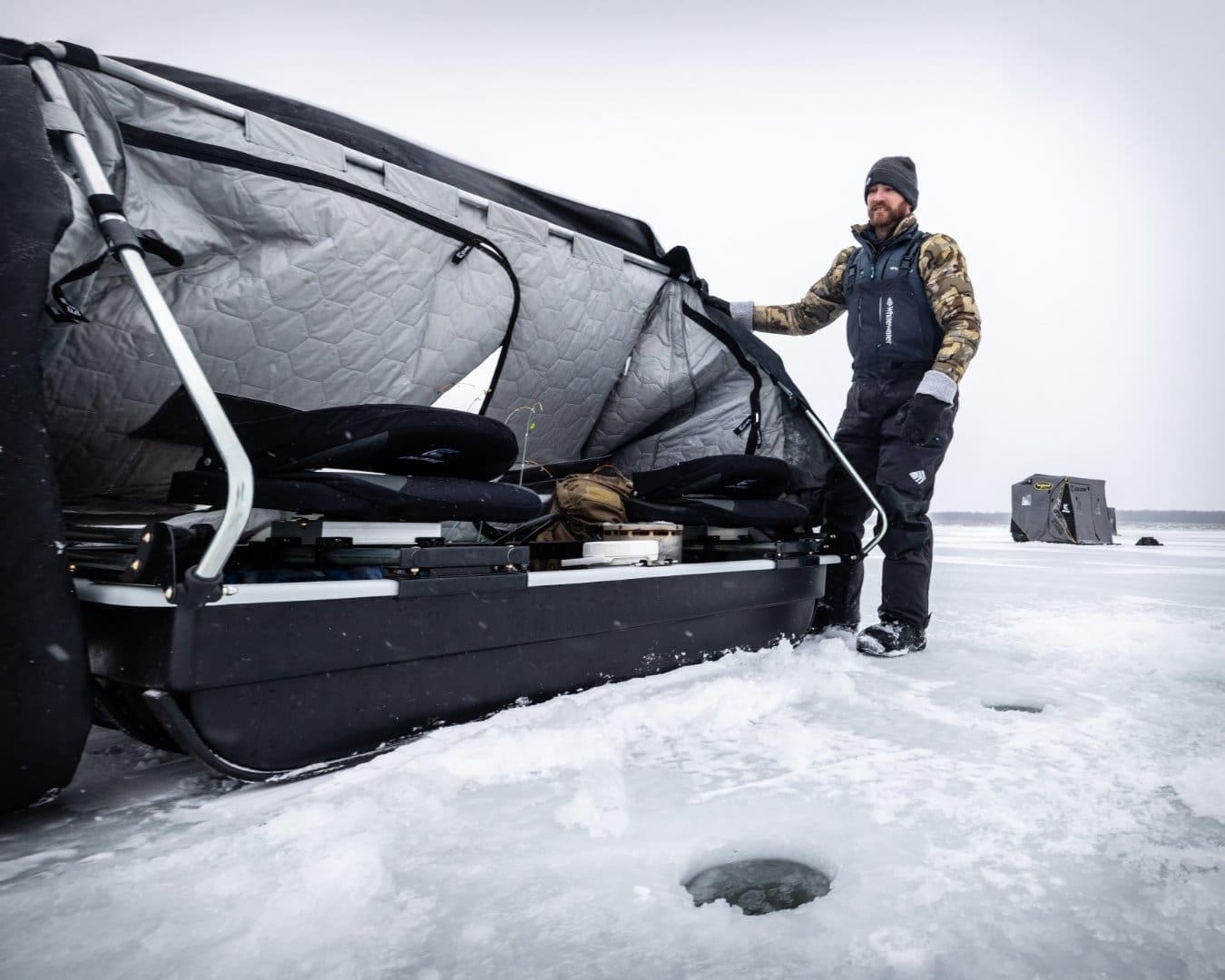
Where To Fish On Devils Right Now
Even though Devils Lake is 50 miles east to west and 30 miles south to north, Sprengel fishes all of it. He must find the best perch and walleye bites for Perch Patrol customers.
“I’ll start by putting clients on walleyes during the morning on one side of the lake and then we’ll perch fish the afternoon on the other side,” says Sprengel.
He says that a lot of it depends on the weather and sun conditions. “It’s a day-by-day thing. I typically fish walleyes in the morning. If it’s dark, foggy, or cloudy, walleyes will move up into water as shallow as four or five feet, or slightly deeper around 10- to 12 feet.”
Sprengel says success comes with knowing when to fish different parts of the lake.
“The northern and western part of the lake has a lot more stained water. On sunny days, those are good walleye areas because of the reduced water clarity. The water clears up the farther you travel east. There can be good walleye bites in the east, too, lengthened with some cloud cover throughout the day.”
Again, at 200,000-plus-acres, Sprengel says there can be lots of bites going on in all directions, you just have to stay mobile and find them. And then you have to dial in on the patterns to catch the walleyes or perch in those areas.
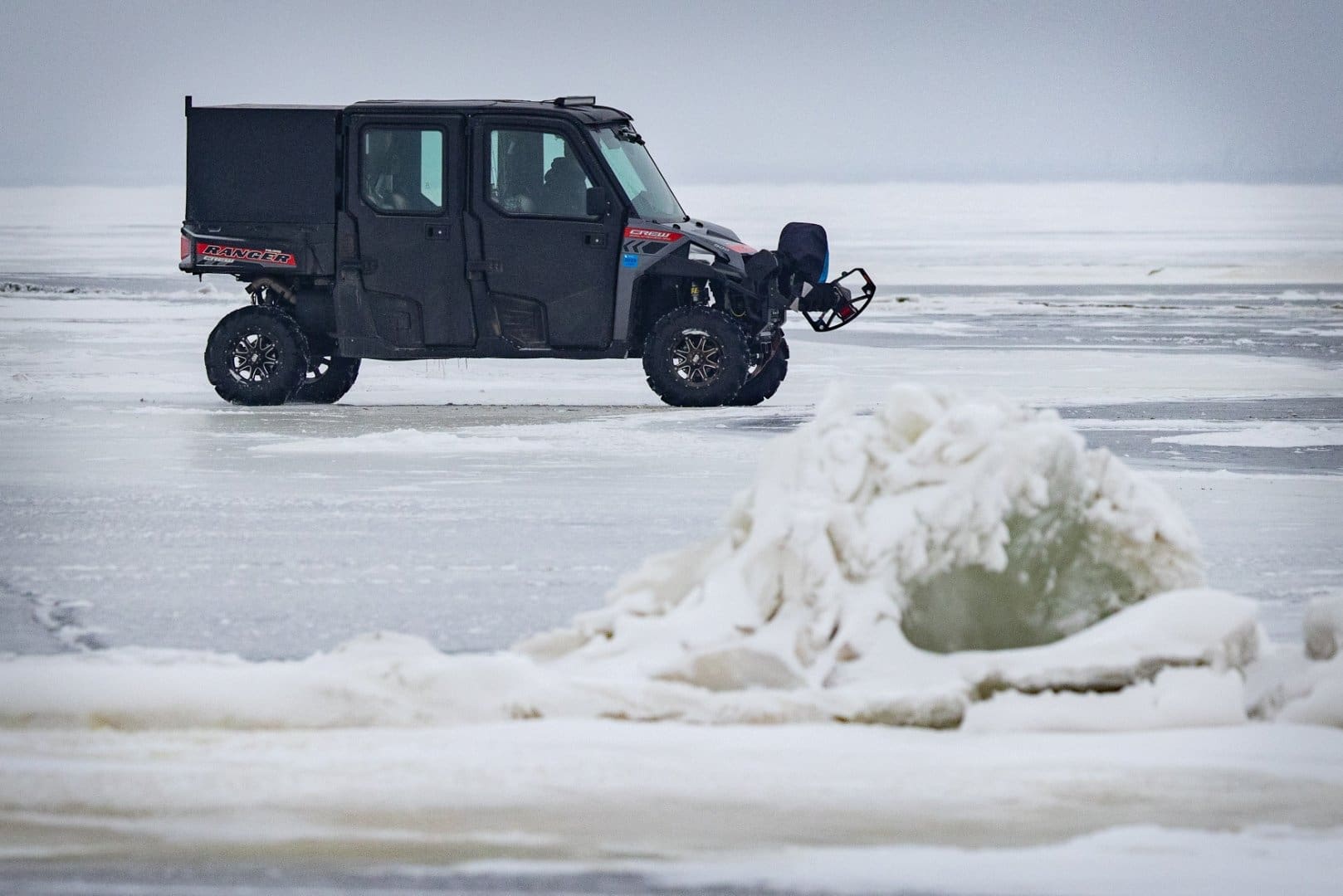
Mid- to Late-Season Perch
Sprengel says the jumbo perch bite was really good prior to the recent warm-up. Now those fish have migrated into deep, 30- to 50-foot basins, expansive areas that are made easier to cover with forward-facing sonar, but still require a lot of hole drilling.
Sprengel is looking for the perch travel routes, areas where he and his clients can intercept big schools of fish.
“This time of year, Devils Lake perch are always cruising. I utilize two rods: one with some kind of rattle spoon and a waxworm to call them in and then a second rod with a tungsten jig and waxy to seal the deal—especially on those days when they’re sluggish.”
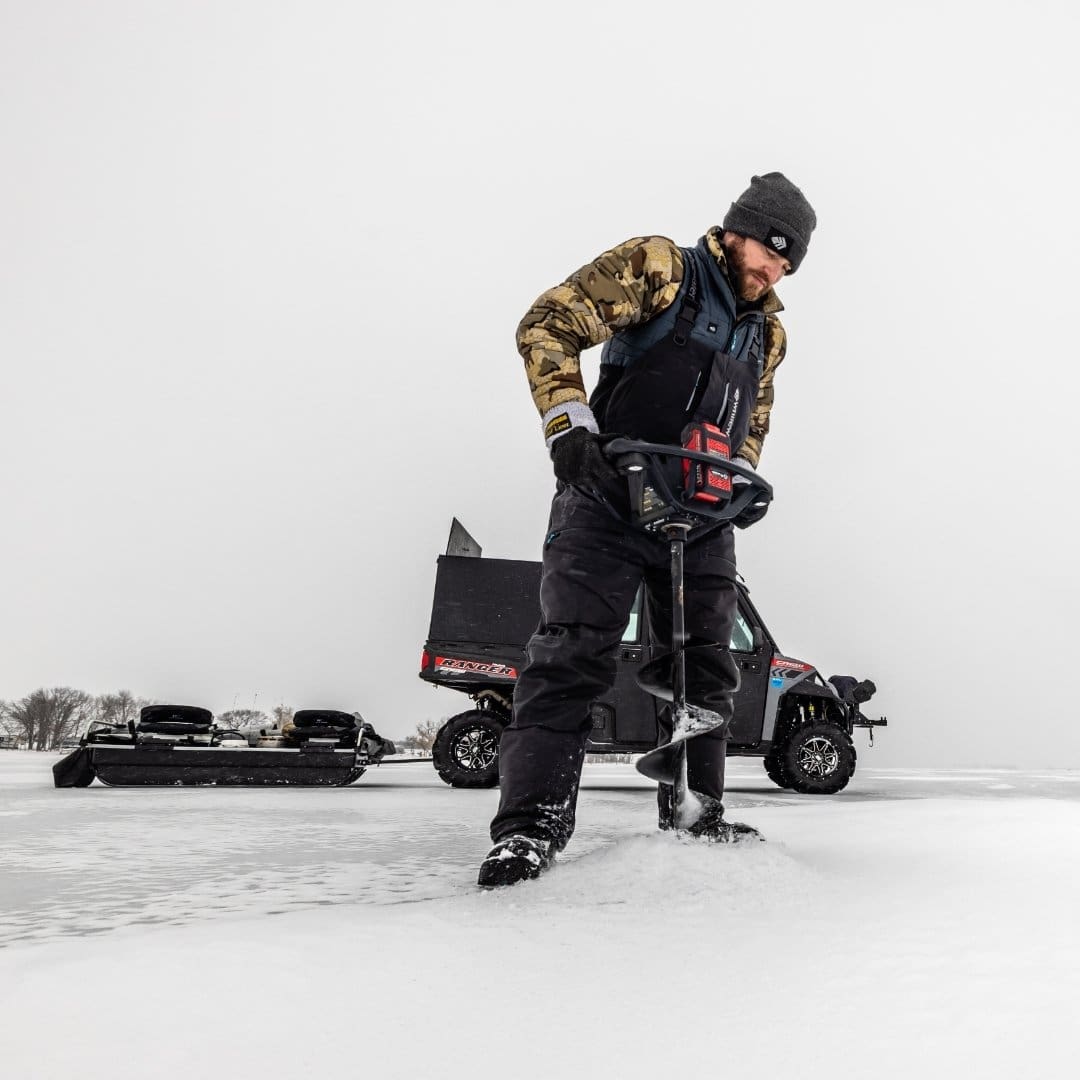
Recommended Wear
Thinking of ice fishing Devils Lake this month? Know that it will be warmer than average for the next week and very comfortable. You won’t need to dress like an astronaut to stay warm. Sprengel’s system for warmer days?
- Base layer: Merino wool long underwear top and bottom
- Sweatpants over base layer
- Whitewater Fishing Buoy Hoodie
- Whitewater Fishing Torque heated vest
- Whitewater Great Lakes Rain Bibs
- Waterproof boots with midweight socks
“The big thing for me is a hoodie and the Whitewater Torque heated vest,” offers Sprengel.
“I wear the vest every day. The mornings are still a bit cool – or you’ll get cloud cover and it’s still damp – so having the button to engage the heating element is nice. Then I shut it off when I get warm moving around to scout areas. Once you try the vest, it is one piece of clothing that won’t leave your arsenal. As far as ice bibs are concerned, I’ve been wearing the un-insulated Whitewater Great Lakes bibs I wear in the boat during spring and fall tournaments over my base layers, sweatpants, and hoodie. That keeps my outfit lightweight, warm, but not too hot—and I can move around really well,” concludes Sprengel.
